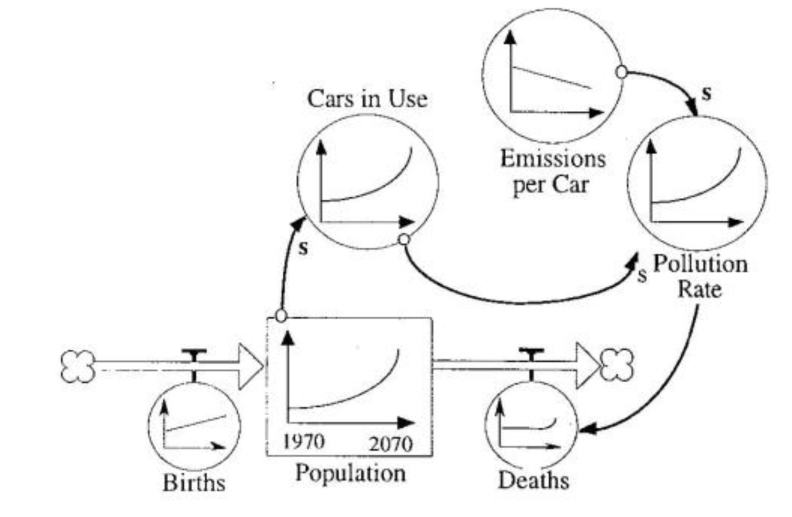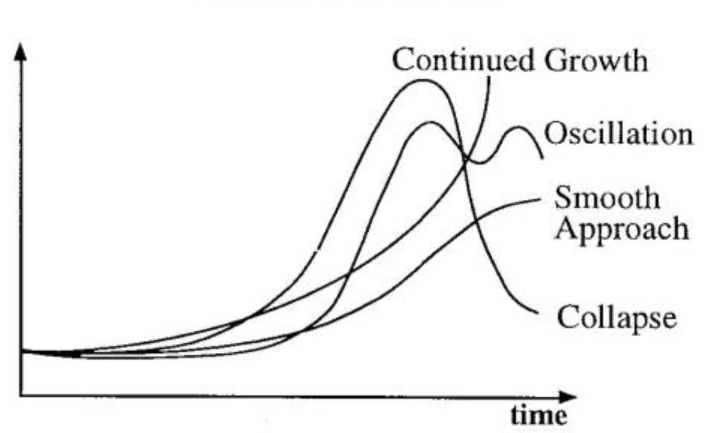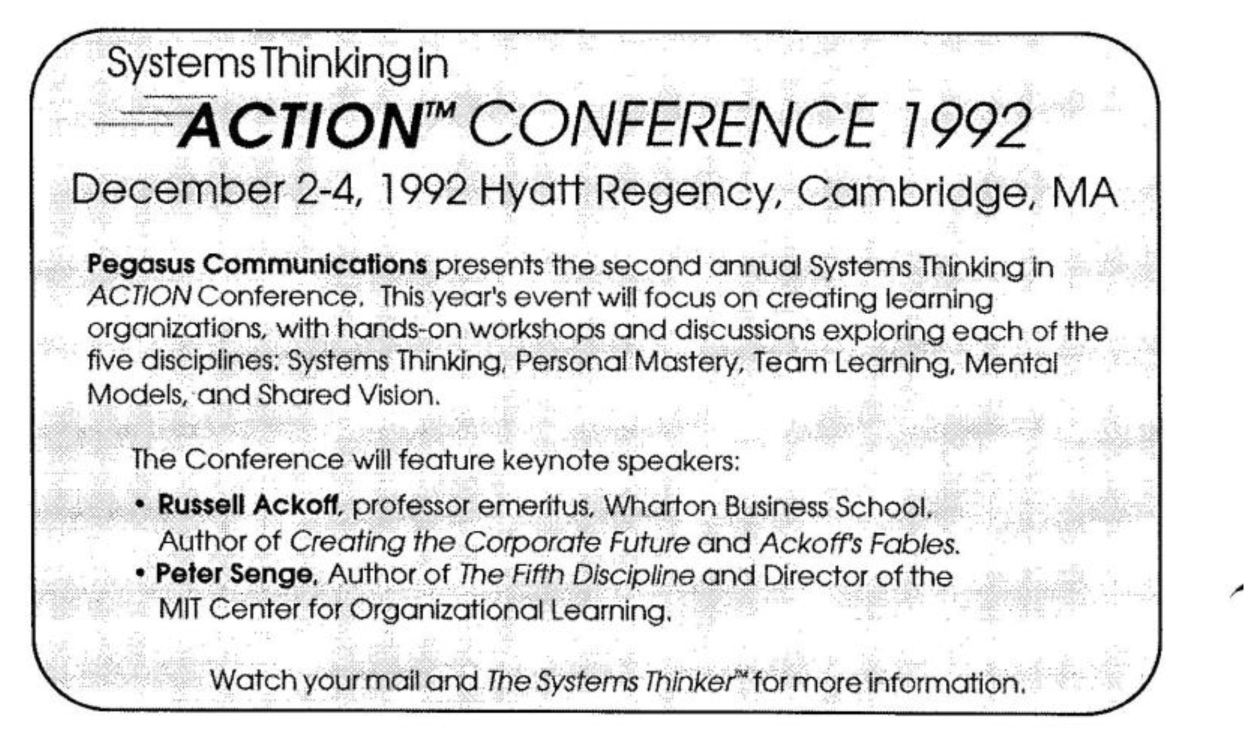What Does It Mean to Be Green? Art Kleiner 1991
Who is going to search for ways to solve these ecology problems? Not the academics. They are people of ideas and data, not usually thought of as decision-makers. Not the environmental activists. They are raising the alert and pushing for solutions, but many of their solutions will be also simplistic. Not the politicians, for nosotros have learned that politicians follow voters. That leaves business-people, the educated determination-makers of North American business concern and industry, considering they are the people who take action."
—Dr. Alan G. Whitney, president of Pacific Synergies Ltd., Vancouver
Companies are cleaning upwards.
During the by twenty years, many businesses challenged the ecology movement, minimally met pollution controls, fought stricter standards, and resisted costly cleanups. Today. notwithstanding, changing consumers and a irresolute economic system are enervating that industries take activeness.
"Over the last 20 years, as ecology limits have become more than apparent, communities, businesses and governments have started to take activeness."
"Xx years ago, corporate leaders had to be dragged into pollution control," country Emily T. Smith and Vicki Cahan of Business Week.
"Today, a minority are taking upwards the crusade of pollution prevention, for good reasons…. Accidents such as the i that killed 2300 people at Union Carbide Corporation's plant in Bhopal, Republic of india in 1984 drove corporate credibility on the surround to an all-time depression." ("The Greening of Corporate America." Business Week, April 23, 1990, p. 96).
Questioning Growth
One of the engines of change has been the publication of The Limits to Growth in 1972. This book was based on a ii-year study at the Massachusetts Constitute of Technology in which a organization dynamics model was built to explore the long-term consequences of growth in population, industrial upper-case letter, food chapters, resources consumption, and pollution. It warned that if current growth trends continued unchecked, the limits to growth on the planet would be reached onetime inside the next 100 years — and information technology created a furor.
Debated, criticized, and praised, the book went on to sell 9 1000000 copies in 29 languages. Many readers questioned the validity of the model, while others claimed the volume was making unjust predictions about growth. Peradventure the most controversial attribute of the book was that it challenged the belief that continual material growth is desirable. The book'southward message was an uncomfortable one — it chosen for fundamental changes in beliefs and actions in order to create a sustainable future.
Over the final twenty years, as ecology limits take get more credible, communities, businesses, and governments have started to take activeness. Research to command pollution emission has led to stricter emission standards and the exploration of alternative energy and power sources. Pollution control and cleanup has become an over $100 billion market place, and it is still increasing as the need for cleaner technologies and products grows. Criminal fines for polluters violating federal laws increased over 80% percent in 1989 alone. Companies accept constitute that eliminating toxic wastes and pollution tin really save coin in resource and energy besides every bit waste disposal.
And then where do we stand now, 20 years after, in relation to the earth'due south limits? How tin can nosotros work toward creating a sustainable economic system that will not overshoot its limits? And what are the time to come implications for concern? These are the questions addressed by a follow-up to The Limits to Growth that was published just last calendar month — a book that is likely to prompt more argue and awareness as well equally more action.
Growth: A Tragedy of the Eatables
Beyond the Limits: Confronting Global Plummet and Envisioning a Sustainable Time to come, is an attempt by three of the original authors (Donella Meadows, Dennis Meadows, and Jorgen Randers) to re-evaluate the earth's sustainability and society's bear on upon it, given the present conditions. What they found is sobering: despite the world's improved technologies, greater sensation, and stronger environmental policies, many resource and pollution flows have grown beyond their sustainable limits. How did this happen?
Co-ordinate to Across the Limits, the limits to growth on our planet are equal to the limits of the planet'southward ability to provide materials and energy, likewise equally the ability of the planet to absorb pollution and waste (see "Ecology Sources and Sinks"). Since 1973, the globe's population has risen from iii.6 billion to 5.4 billion. As this ever-increasing population demands more resource to support information technology, the subsequent strain upon the earth's resources has also grown exponentially. The effect is a "Tragedy of the Commons" situation, where deportment taken for private proceeds are collectively overtaxing the earth's resources.
As Garrett Hardin described this phenomena in a 1968 essay, imagine a pasture (similar the Commons in an English village) that is open to all townspeople. Each villager is immune to graze as many cattle equally he or she desires — the more cattle they graze, the better their profits. But if besides many cattle are added, the whole commons could become overgrazed, depriving the entire villages' cattle of food. Despite the threat overgrazing presents to each villager, the "Tragedy of the Eatables" construction encourages the villagers to each add to their own herd to increase profits ("Tragedy of the Commons: All for One and None for All," Vol. 2, No. vi). Eventually, the pastures can become so depleted that even the grass roots disappear, permanently destroying the pasture itself. Every bit a event, each private pursuing actions in his or her ain best interest creates an effect that is worse for everyone.
Environmental Sources and Sinks

"The homo population and economic system depend upon constant flows of air, water, food, raw materials, and fossil fuels from the earth. They constantly emit wastes and pollution back to the globe. The limits to growth are limits to the ability of the planetary sources to provide those streams of materials and energy, and limits to the ability of the planetary sinks to blot the pollution and waste product." (Beyond the Limits)
To compare this scenario with the exponentially growing world population and industrial base, imagine that not only the number of cattle (resources drains and pollutants) are growing, only that the neighboring townspeople have all heard of the beautiful, spacious pastureland and want to use the commons for grazing. And then the number of cattle herders (people, companies, industrialized countries) increases as well. Not only will the group reach the pastureland'south limits, but they will accomplish them more quickly. That, according to Beyond the Limits, is the situation nosotros face as a world population.
Reaching the Limits
What volition happen every bit we reach the earth's limits? In that location are four possible outcomes (run across "Approaching the Limits: Four Possibilities"):
1. If the limit is very distant or growing faster than the need, growth can keep without interruption.
two. Growth can arroyo the limits smoothly and then level off when information technology reaches those limits.
3. It can gradually come up into balance by overshooting the limits, coming back down, and shooting back upwards again (much like how a thermostat adjusts the temperature in a room).
4. Information technology can overshoot the limits, destroy the resource base, and later plummet.
1 of the most common arguments for connected industrial growth is that better technology will find solutions to the problems we are creating. This argument supports the outset possible upshot — information technology says that past continually pushing dorsum the limits, we will allow continued growth.
Structurally, notwithstanding, the rate at which growth is occurring is too fast for correction. Due to the layering nature of limits, the number of limits we will run into is increasing as well — one time nosotros remove ane limit, we often see another ane. Technological advancements that remove one limit can create additional limits: nuclear ability plants, for example, take helped replace fossil fuel usage, simply their past-products are choking landfills with toxic waste.
The example of emission control for cars illustrates the structural difficulties inherent in trying to use engineering to manage the dynamics of exponential growth. Even if we can cut pollution emission by 50, sixty, or even 90%, if the number of cars is ever increasing exponentially, the amount of pollution will also proceed to grow exponentially. After a certain signal, reducing the emission levels will prove too costly for whatever engineering science.
The Danger of Overshoot
Systemically, the simply manner for an exponentially growing homo economic system to prevent reaching a planet's physical limitations is to balance its inflows and outflows. This requires two actions: (i) reducing usage of nonrenewable resource to the rate at which renewable resource can be substituted for them, and (2) reducing the rate of renewable resource use to equal regeneration rates. Too, the emission rates for pollutants need to exist brought downwardly to equal the charge per unit at which they tin can be absorbed, recycled, or rendered harmless.
The difficulty in smoothly balancing the inflows and outflows lies in the fourth dimension delays involved. Annihilation that is growing will stop at its limits only if it recognizes that it is reaching those limits and responds chop-chop. Due to the inherent delays in the global system, information technology is almost impossible to get accurate and timely feedback on the impact of industrial growth on the surroundings. For example, in the instance of the impact of chlorofluorocarbons on the ozone layer, in that location is a long delay betwixt the release of a CFC molecule into the air and the subsequent destruction of ozone. Because of the long delays, even if all the CFC releases into the air were stopped today, ozone depletion would continue for at to the lowest degree a century.
Emission Control for Cars

The result is that in well-nigh "Tragedy of the Commons" structures, the organisation shoots beyond its limits before it gets the signal that it has gone besides far. That, in effect, is what has happened already, co-ordinate to the World3 model used in Beyond the Limits — nosotros take already overshot many of the earth'south limits. Whether or not nosotros will ease back down below the limits (by bringing the inflows and outflows in line), or destroy the resource base and feel a collapse, depends on the quality and timeliness of our response to the challenges we face as a planet.
Implications for Concern
The basic bulletin in Beyond the Limits is that the pressures created by growth are non going to disappear — at that place are fundamental structural reasons why they must exist addressed sooner or later. The situation is analogous to the instance of our trade debt and federal debt — we have been borrowing from the hereafter in order to live amend today. In the same sense, we have also been accruing an ecology debt without knowing what the true toll of borrowing is nor what the payback schedule is going to exist. A systematic plan to begin paying dorsum our ecology debt needs to exist put in place before we reach the limits of nature's reserves.
Approaching the Limits: Four Possibilities

In presenting World3'due south findings, Beyond the Limits challenges companies to examine long-term investment and future limitations rather than gauging success based on brusque-term profits. Fine art Kleiner, in a recent commodity in the Harvard Business Review, stressed that such changes are crucial: "Industry (and nations, for that matter) cannot thrive if they sacrifice future quality of life for present economic gain" ("What does information technology Mean to be Green?" July-Baronial, 1991, p. 38). Keeping inside the world'due south limits and working toward a sustainable society will require primal changes in the way our organizations' goals and incentives are structured. For example, the following will demand to be addressed:
- Product Lifecycle Waste Management. Every ton of garbage at the consumer terminate has already produced five tons of waste matter at the manufacturing stage and twenty tons of waste at the initial site of mining, pumping, logging, or farming. As recycling and conservation efforts increase at the consumer level, force per unit area for pollution cleanup and prevention upstream in the manufacturing process is likely to increase.
- Total Bundle and Product Redesign. Current packaging methods produce a big amount of no recyclable waste. Companies that invest in irresolute the style they industry, package, sell, and dispose of their products can exist more than competitive in the emerging environmentally conscious marketplace. Some auto manufacturers, for example, are experimenting with new designs that will let for easy dismantling and so that each role can be recycled.
- Environmental Accounting. Being able to track the costs associated with harmful by-products of manufacturing will go increasingly more than important. While whatsoever skilful accounting arrangement can report on the usual financial measures, new systems volition be required to guess environmental liabilities that may be growing beyond industry's means to deal with the future costs that are being accrued.
- Shades of "Green." At that place is at present an opportunity to redefine the marketplace into shades of dark-green consumers: from the "stake green" stop where consumers volition choose products that are environmentally friendly but crave little try or cede on their role, to those who are "deep green" and will go out of their way to patronize companies whose products and services are accounted to be environmentally friendly. Companies who can appeal to the full spectrum of the green consumers are likely to exist well positioned to compete in the new marketplace.
If there is anything to be learned from the last twenty years, information technology is that the environmental motility is not a passing fad but a permanent reality. There are genuine structural reasons why the issues will proceed to abound in importance. The choice that companies must make is whether to be a leader in becoming more environmentally responsible, to be in the center of the pack, or to exist a laggard that kicks and fights inevitable changes at every step.
Building a Sustainable Time to come
"A sustainable society," according to the authors, "is one that can persist over generations, one that is far-seeing enough, flexible enough, and wise plenty not to undermine either its physical or its social systems of support…. From a systems point of view a sustainable lodge is one that has in place advisory, social, and institutional mechanisms to keep in check the positive feedback loops that cause exponential population and capital growth."
Sustainability does non mean stagnation. A sustainable order is interested in qualitative development, not sheer physical growth. It requires that nosotros brainstorm to ask questions such equally what the growth is for, who would do good, what would it cost, how long would it terminal, and whether or not the planet's sources and sinks could suit it.
To achieve a sustainable economy, according to the authors, the most important change of all needs to have place individually, equally nosotros re-evaluate our mental models near consumption and waste matter. We must let go of the "sacred moo-cow" that growth at all costs is desirable. People might have to change from a "have it all now" philosophy, valuing a high standard of living, to an attitude that values an improved quality of life for the present and the future. Asking ourselves about the actions nosotros take and what their future effects will be — non but in terms of market share and profits, but in terms of time to come resource availability and environmental impact — will challenge us to make the correct decisions for a shared world.
Businesses have the opportunity to brand the greatest impact toward building a sustainable future. Activists can brainwash, consumers tin piece of work on an individual level, and government can legislate — merely businesses can act. Industry has the opportunity to introduce and create the changes that will button the environmental movement past the "hype" and into a world of genuine action.
As the economy tightens, some businesses and consumers may recall they can't afford environmental improvements. But failing to protect the environs might end up costing far more than than preserving it. Eastern Europe's electric current "ecotastrophe" is a case in point: Hungary's Deputy Country Secretary estimated that wellness bug and loss of production due to pollution reduced their nation's gross domestic product more than than 6%. ("Is the Planet on the Back Burner?", Fourth dimension, Dcc. 24, 1990, p. 48-50).
Making educated choices around such issues is the challenge of operating a business in today'south globe—the largest industrial group on the smallest overpopulated pastureland that has always existed. Only if businesses practice not stop to challenge the choices they are making, they might detect they accept travelled down the incorrect path in the long run—the path of real economic loss and the destruction of vital resources.
Meadows, Donella, Dennis Meadows. and .10rgen Randers. Beyond the Limits. (Chelsea Greenish Publishing Company. 1992); Further Reading: Milbraih, Lester. Envisioning a Sustainable Social club: Learning Our Manner Out. (SONY Press, Albany, 1989)

Source: https://thesystemsthinker.com/rebuilding-the-commons-envisioning-a-sustainable-economy/
0 Response to "What Does It Mean to Be Green? Art Kleiner 1991"
Post a Comment